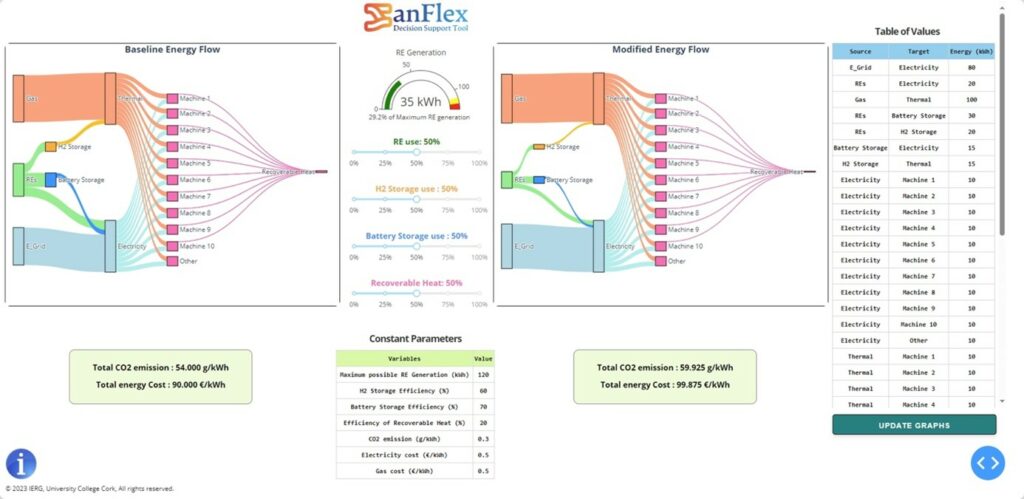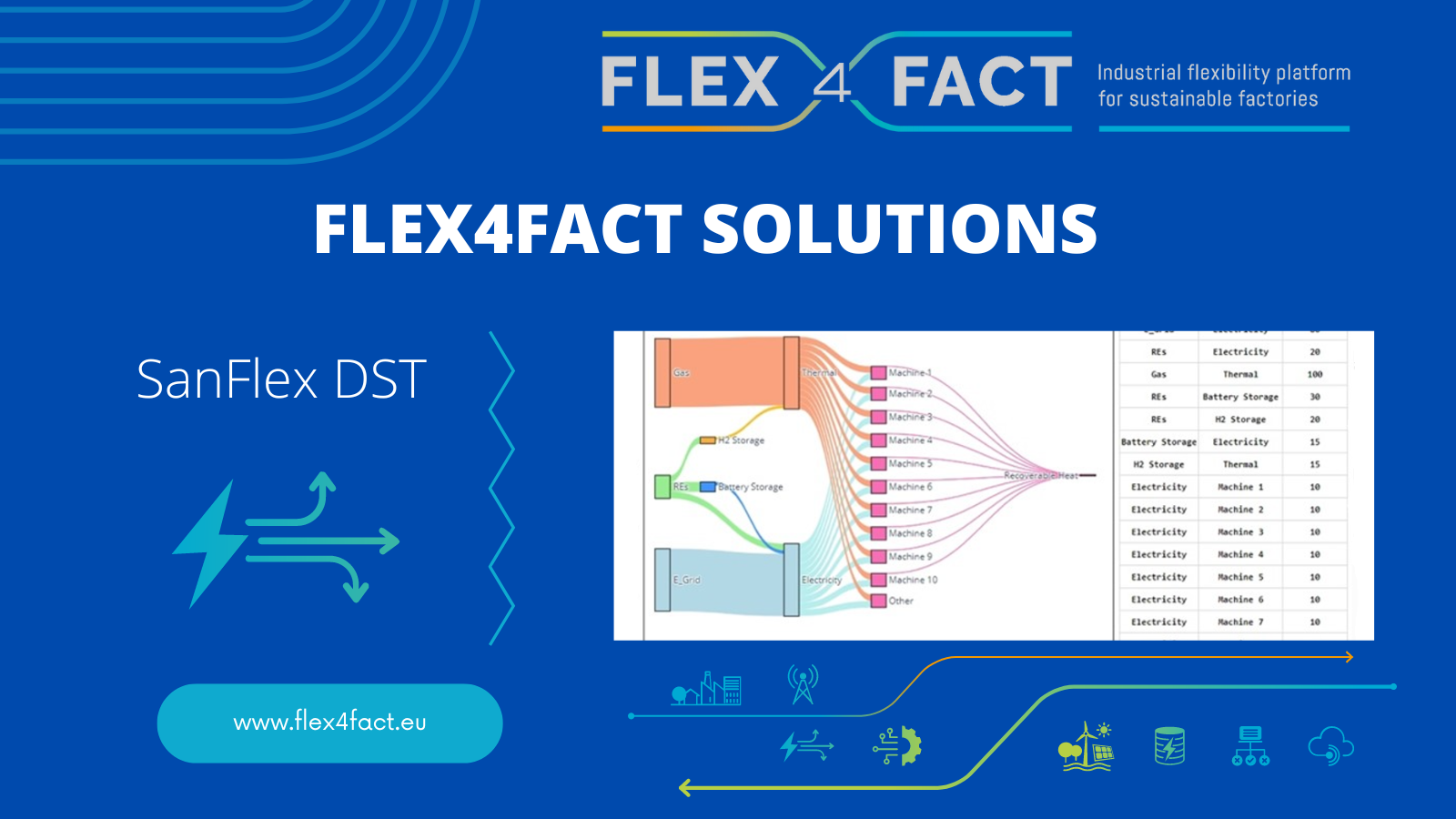The SanFlex Decision Support Tool (DST), developed by our partner University College Cork (UCC), uses Sankey diagrams to graphically visualise energy flows in industrial production processes. The tool is designed to provide a deeper understanding of energy consumption and CO2 emissions, and to support sustainable energy management decisions across a range of industries.

Main Features of SanFlex
SanFlex is an intuitive platform that offers a range of features designed to improve energy management. Key features include:
- Graphical visualisation: Uses Sankey diagrams to clearly display energy flows, allowing users to easily understand complex data.
- Interactive user interface: Users can enter their baseline energy data and adjust parameters such as on-site generation and total energy consumption to see real-time updates in the graphs.
- Scenario analysis: The tool allows data to be exported and different energy management scenarios to be compared, helping users to find optimal solutions.
- Cost and emissions calculations: SanFlex helps users analyse the potential costs and greenhouse gas emissions associated with different energy strategies.
Benefits for the FLEX4FACT Community
The implementation of SanFlex within the FLEX4FACT project has demonstrated significant benefits:
- Dynamic visualisation: Allows users to dynamically modify the visual output to reflect changes, such as the increase in on-site renewable energy, helping to predict changes in energy costs and CO2 emissions.
- Improved decision making: By providing a visual and interactive means of assessing energy flows and their impacts, SanFlex helps stakeholders make more informed decisions about energy use and sustainability.
Future Plans
SanFlex is currently available to project participants, with plans for wider distribution in the future. This planned expansion aims to give more industries access to this important tool, enabling them to engage in more effective energy management practices.
